The Foundry: Teaching the Historic Trades
Graduate students spend a lot of time reading; there is no way to get around it. But one of the most magical parts of a Winterthur education has been the learning we do far from classroom and library settings. While books are wonderful resources, there are certain aspects of historical craftsmanship, architecture, and manufacturing that just cannot be conveyed through texts or classroom discussions. Winterthur Fellows learn immense amounts during our trips, and over the past two years we have been able to supplement our classwork and readings by meeting and learning from people who are passionate about the trades they do.
Left to right: spinning with Heather Hansen; carding wool; silversmith Ubaldo Vitali raising a silver vessel
During Summer Institute we had the chance to work with Heather Hansen (WPAMC 2010) where we learned about wool, learning how to clean it, card it, dye it, and spin it. In our Connoisseurship Blocks, we traveled to Maplewood, New Jersey to see Ubaldo Vitali work with silver, both by hammering and by sand casting, and to Red Lion, Pennsylvania, where we learned all about weaving and ingrain carpets at Family Heirloom Weavers. In England we watched craftswomen at the Gladstone Pottery Museum shape and decorate delicate ceramic flowers at mind-boggling speeds, and in Sharon Springs, New York, Steve Larson showed us how to block print wallpaper at Adelphi Paper Hangings, Ltd. Most recently, our New York Field Study in January brought us to P.E. Guerin, a commercial brass foundry that has been casting hardware and decorative brass work since 1857.


Left to right: a loom at Family Heirloom Weavers; block printing at Adelphi; bronze casting at P.E. Guerin
Each of these experiences has deepened our knowledge of historic craftsmanship and manufacturing. We know what registration marks are when it comes to block printing . . . and we know how to use them! We know what the sand feels like that is used in sand casting, and we understand how that process works. While we certainly are not skilled craftsmen, we have a firsthand knowledge of the processes involved in creating so much of what we study. What other graduate program teaches these things?!
Without doubt, however, Ritchie Garrison’s Craftsmanship Class is the ultimate in experiential learning. In addition to our readings and class time, we spent three days in Colonial Williamsburg, working in the trade shops. Reading about a trade one thing . . . doing it is another. Each of our experiences at Williamsburg taught us so much about the tools, materials and, perhaps most unexpectedly, how our bodies act toward (or, in some cases, react against) the labor required for certain trades.
As I look back in my notebook from our visit, I find that there aren’t very many notes written down about our experiences, partly because I was too busy doing things to write, and partly because words simply cannot adequately explain all that we did. But I can tell you my arms were sore for several days after we got back, and I have a far greater understanding and appreciation for the objects that were part of daily life in Colonial America.

The James Geddy Foundry (photo from history.org)
After two busy days spent in eight different trade shops, we started Saturday morning bright and early with Mike Noftsger and Suzie Dye in the James Geddy Foundry, a reconstructed mid-eighteenth-century foundry where the Geddy family worked as gunsmiths, cutlers, and founders. As we walked across Palace Green, we saw smoke coming out the chimney of the little white building, so we knew they were getting ready for us.
Entering the foundry I was immediately struck by the ways that the building’s layout and construction were inherently tied to its purpose. In the front room white walls reflected the daylight coming in the windows, illuminating the workbenches upon which an assortment of tools including hammers, files, and burnishing tools stood at the ready. As I walked around, I quickly realized the floors were entirely made of brick, reducing fire danger in the event molten metal was dropped on the floor. In the center of the building a forge provided a place to heat and melt metal before pouring, surrounded by a brick surface upon which molds could be placed when casting was taking place. A metal rod with a wooden handle hung from the ceiling next to the forge, connected to the bellows, allowing a person to keep an eye the forge and pump the bellows at the same time. Clearly this space was designed not only for safety, but also for efficiency and ease of operations.
Inside the foundry
Mike and Suzie welcomed us to the Geddy Foundry, and promptly began telling us about their trade. While Suzie pumped the bellows to heat the pewter we were going to cast, Mike showed us some of the items the shop makes: silver tea pot spouts, axe heads, decorative brass pieces, sword hilts and handles, and, most importantly for us, pewter flatware. After all, we were there to work, and today we would be casting our own pewter spoons!
Mike explains the work of the Foundry while Suzie pumps the ceiling-mounted bellows.
Suzie explained the process of casting spoons, showing us how to align the bronze mold, how to draw back the skim on top of the molten pewter with the ladle, and how to gingerly pour the liquid pewter into the mold, slowly lifting the mold up at the very same time. She demonstrated the process for us, taking her spoon out of the mold, and assured us that we would succeed in making a spoon. Those that were not good enough, she said with a grin, would be put back into the pot. With that she placed her spoon back into the molten pewter, slowly stirred it, and before our eyes the spoon became liquid pewter again.
As we tried our hand at casting pewter spoons, it was soon clear that the process was not quite a simple as Suzie made it appear. The hole on the top of the mold was small and it was easy to spill pewter all over the outside of the mold without getting a single drop inside. Slowly, however, we got the hang of things, and started getting semi-spoon like forms. We soon learned there were some tricks to mastering the spoon mold. Suzie advised us to start pouring the spoon with the mold at and angle gradually raising it so that the mold would be perpendicular just as the pewter was filling the last of the mold. This was easier said than done, but we eventually got it.
Jesse tries his hand at casting his spoon. A pile of mistakes (also known as learning opportunities) lies in the foreground, waiting to be tossed back into the pot.
Perhaps most interesting to me was how the mold reacted if it was set aside for a short period of time. If allowed to cool down just enough, the next spoon would not come out well. When she saw this take place, Suzie would pour a couple of spoons in rapid succession, reheating the mold enough to make the process easier for us. Clearly there was something about maintaining a consistent temperature in the mold that made the casting process more successful. Equally interesting was the quick time in which the pewter solidified. Less than a minute after pouring, we were able to hold (with gloves) our creation!
Slowly but surely, we each ended up with a spoon, but it still was not something you would want to put in your mouth! Jagged edges remained where the two parts of the mold came together, and slight imperfections were visible when we looked at our spoons in the daylight streaming through the windows.
While Suzie worked to make sure everybody in the group had at least one spoon, Mike showed us how to file the edges smooth, and demonstrated certain techniques to keep us from flattening out the bowl of our spoon. Even though it seems obvious looking back, it had never occurred to me just how quickly a flat file can disfigure a rounded bowl. Luckily, some careful coaxing from Mike kept my bowl from ending up with a strange flat section.
Filing the spoon’s handle. Parts for two candlesticks sit in the background, waiting to be finished.
Just as we learned in all of the trades, the devil is in the details, and after spending what seemed like forever filing, our spoons still weren’t ready for use! Despite our sore hands, there was more work to be done! Using a burnisher we had to make our spoons smooth and shiny. As nice as we thought our spoons looked when they came out of the molds, burnishing them made them even more attractive. Our dull pewter spoons became brilliant shiny pewter spoons and the sad grey color was soon an impressive silvery sheen.
A spoon after burnishing
Before we knew it, it was time to head off to our next stop, the Wheelwright, but not before a group photo in front of the Geddy Foundry with our gracious hosts. Thank you so much to Mike and Suzie for welcoming us to the Geddy Foundry and for being so patient with us as we learned about the casting process! We love our new spoons!

From left to right: Suzie, Emily, Erica, Amy, Jesse, Willie, and Mike. Notice how big our smiles are. Clearly, we loved the Geddy Foundry!
By Willie Granston, WPAMC, Class of 2016

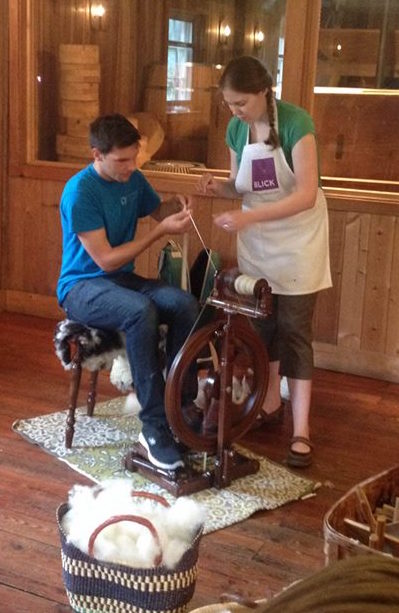
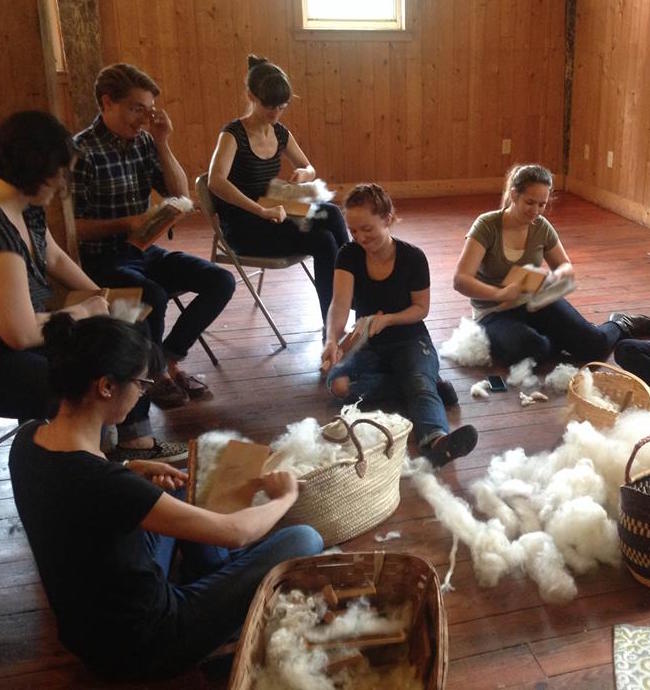
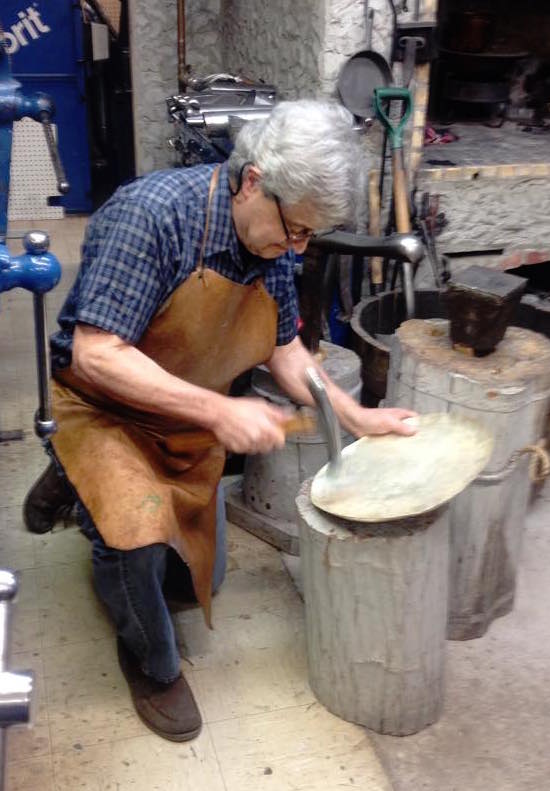
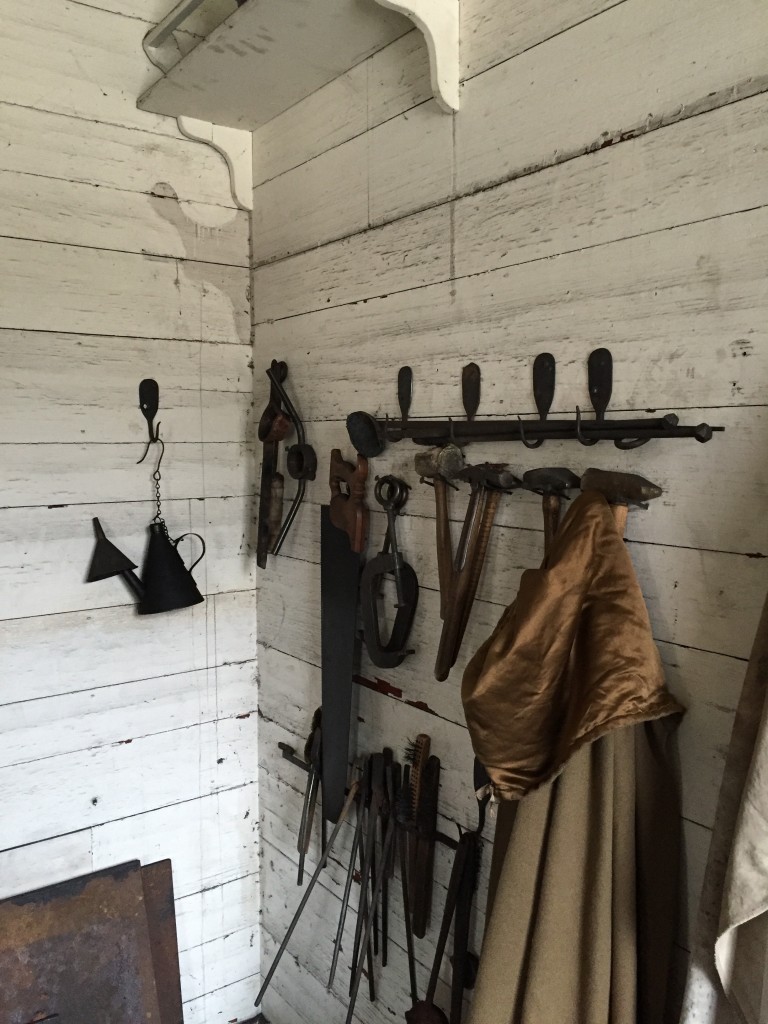
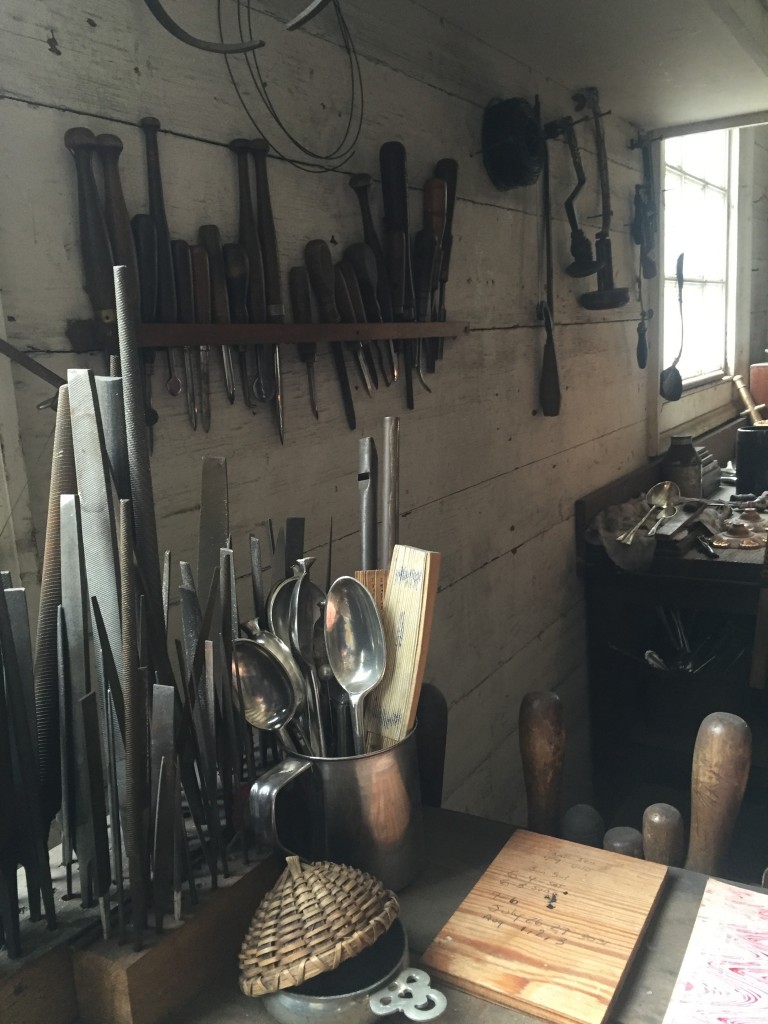


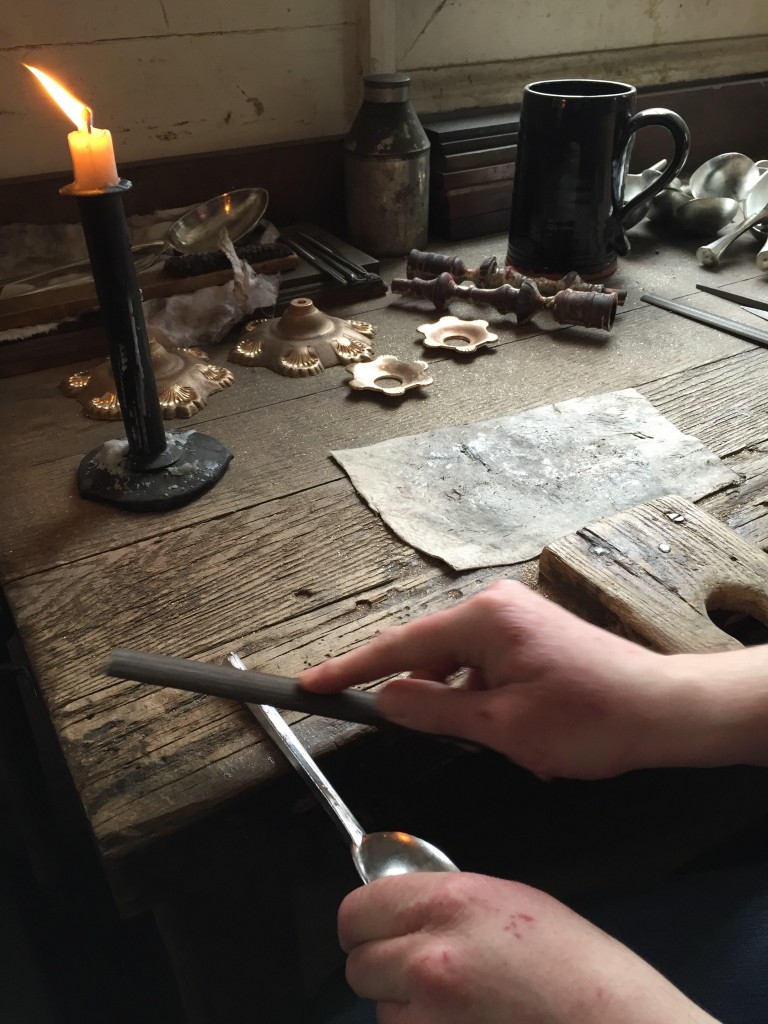

Leave a Reply